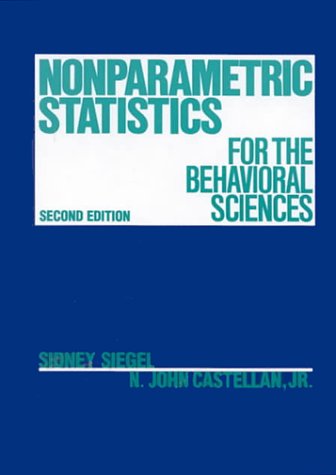Nonparametric statistics for the behavioral sciences pdf download
Par leake willie le jeudi, juillet 14 2016, 00:42 - Lien permanent
Nonparametric statistics for the behavioral sciences . Sidney Siegel

Nonparametric.statistics.for.the.behavioral.sciences..pdf
ISBN: 9780070573, | 332 pages | 9 Mb

Nonparametric statistics for the behavioral sciences Sidney Siegel
Publisher: McGraw-Hill
Part V: CORRELATIONS AND NON-PARAMETRIC TESTS. By integrating instructions, screenshots, and practical examples for using IBM SPSS® Statistics software, . This chapter gives an overview of the typical statistical exploratory and confirmatory tools available and suggests case-specific guidelines for a reliable statistical approach that can be used for 2DE analysis. Non-parametric statistics for the behavioral sciences. Here, piano playing was used as a flow-inducing behavior in order to analyze the relationship between subjective flow reports and psychophysiological measures. The original structure is retained, and the book continues to serve as a combined text/reference. Nonparametric statistics for the behavioral sciences (2nd ed.). Statistics for the Behavioral Sciences 9th Gravetter Wallnau Test Bank Statistics for the Behavioral Sciences Gravetter Wallnau 9th Edition Test Bank ISBN: 1111830991. Statistics for the Behavioral Sciences is an introduction to statistics text that will engage students in an ongoing spirit of discovery by illustrating how statistics apply to modern-day research problems. For the combined period 2006-2008, including the years 2006 and 2008, Siegel, S. Chapter 18—Nonparametric Tests: Tests For Ordinal Data. This is the revision of the classic text in the field, adding two new chapters and thoroughly updating all others. Part I: INTRODUCTION AND DESCRIPTIVE STATISTICS. It also evaluates the use of Statistical Significance tests in Information Retrieval and then proceeds to check the different significant tests used by researchers in the papers submitted to Special Interest Group on Information Retrieval (SIGR) in the period 2006, 2007 and 2008. Towards an understanding of the relationship between family-oriented benefits and employee behaviors: Does coworker support matter? 18.3 SPSS in Focus: The related samples sign test.